Disclosure: We may get commissions for purchases made through links in this post.
Exposed aggregate makes your driveway look polished and sophisticated, acting as a visual upgrade for the exterior of your home. The only downside is that it's as stunning as it is difficult to clean! Because it's not a uniform slab or a flat surface, regular cleaning can dislodge its stones. So how do you clean it? Can you pressure wash it? We've done the research to help you find out how to clean exposed aggregate properly.
Yes, you can pressure wash exposed aggregate. When done right, it can be one of the most efficient methods to clean the surface. You can remove dirt and stains and maintain the beauty of your exposed aggregate by following these steps:
- Sweep away dirt and debris.
- Pressure wash the surface.
- Apply cleaner.
- Scrub away stains.
- Rinse off the surface.
There's a lot more information you need to know in order to perform this task successfully, so keep reading as we go in-depth into each step! We'll provide tips and tricks to guide you as you go along the process. Plus, we'll provide answers to more of your questions about maintaining exposed aggregate.
![Top View of exposed aggregate with Small Green Bush, Can You Pressure Wash Exposed Aggregate [How To Clean It: 5 Simple Steps]](https://pavingplatform.com/wp-content/uploads/2022/02/Can-You-Pressure-Wash-Exposed-Aggregate-How-To-Clean-It-5-Simple-Steps.png)
5 Steps to Clean Exposed Aggregate
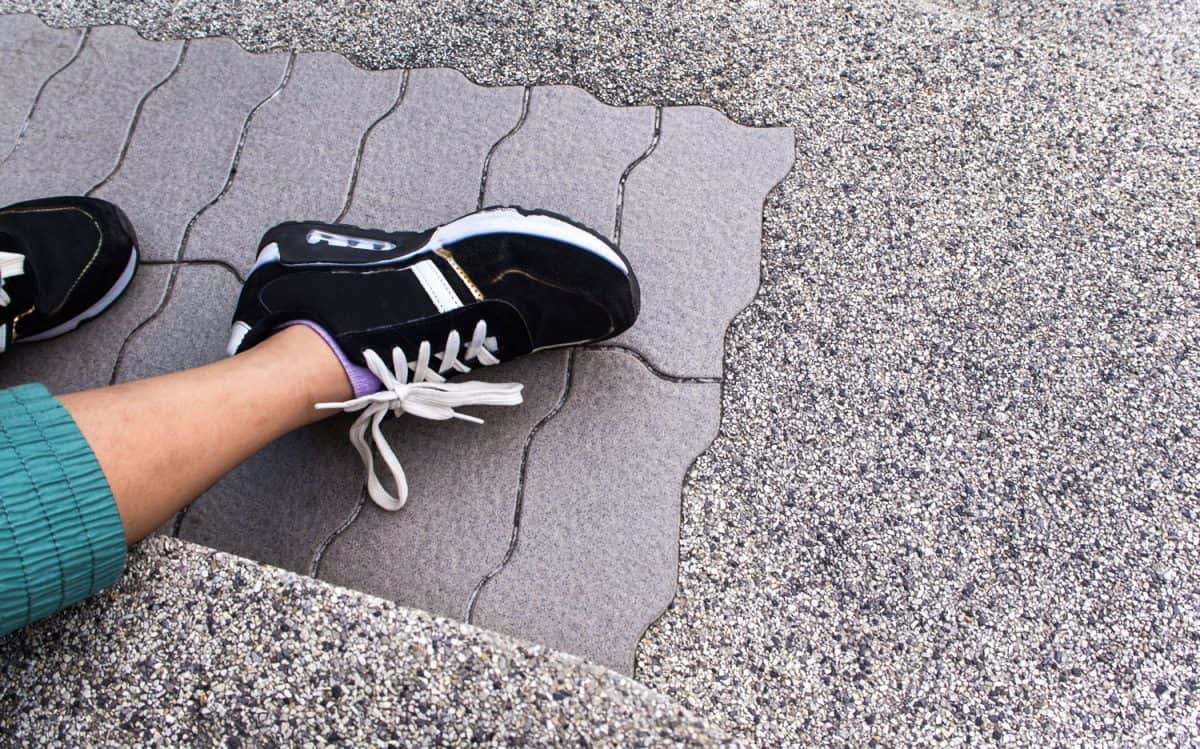
Over time, exposed aggregate can lose its appeal with regular use and exposure to the elements. In fact, its top layer is quite prone to dirt. Oil stains and tire tracks can also affect its appearance. You can prevent this from happening by giving it a little TLC via thorough cleaning from time to time.
To clean exposed aggregate the right way, follow these steps:
1. Sweep away dirt and debris
Start by using a broom to sweep dirt, debris, leaves, branches, loose stones, and other objects that can get in the way of your cleaning and stain removal later on. You can speed this process up with a leaf blower if you have one.
2. Pressure wash the surface
Now it's time to wet the surface using your pressure washer. This step will help further remove any stubborn dirt left. If you don't have one for your pressure washer or if you're out to buy your first one, get a 40-degree white nozzle. This produces the gentlest stream suitable to prevent damage to delicate surfaces such as exposed aggregate.
Click here to see this spray nozzle on Amazon.
Set the pressure at no more than 3,000 PSI (pounds per square inch). While pressure washing the surface, make sure to stay away from the edges and keep the nozzle at least a foot away from the surface.
Take note: pressure washing can splash back into your face and skin. Make sure to wear protective gear including safety goggles, gloves, a mask, and closed-toe shoes.
3. Apply cleaner
For this step, you can use any concrete-safe chemical cleaner and degreaser. This will help remove dirt and lift off different types of stains (such as oil stains, rust, and tire marks).
Remember to read the instructions on the label or manual before applying to ensure you don't damage the surface. Don't use any more than recommended.
Once you've applied the cleaner, leave it to sit for the amount of time indicated in the instructions. This will allow the cleaner to emulsify the stain and make it easier to scrub off.
4. Scrub away stains
After you've let it sit for the recommended time, use a stiff-bristled brush or broom to help the cleaner penetrate and remove the stains.
Be careful, though! Forceful brushing can loosen the stones and compromise the surface of exposed aggregate, so be gentle in scrubbing. If the stain refuses to come off, slowly apply more pressure.
5. Rinse off the surface
The final step is to rinse the cleaner off the surface. Use your pressure washer once again to do this. Start from the high part of the slab down to the lower area towards the road. Move from left to right as if you're sweeping - this motion will help prevent streaking.
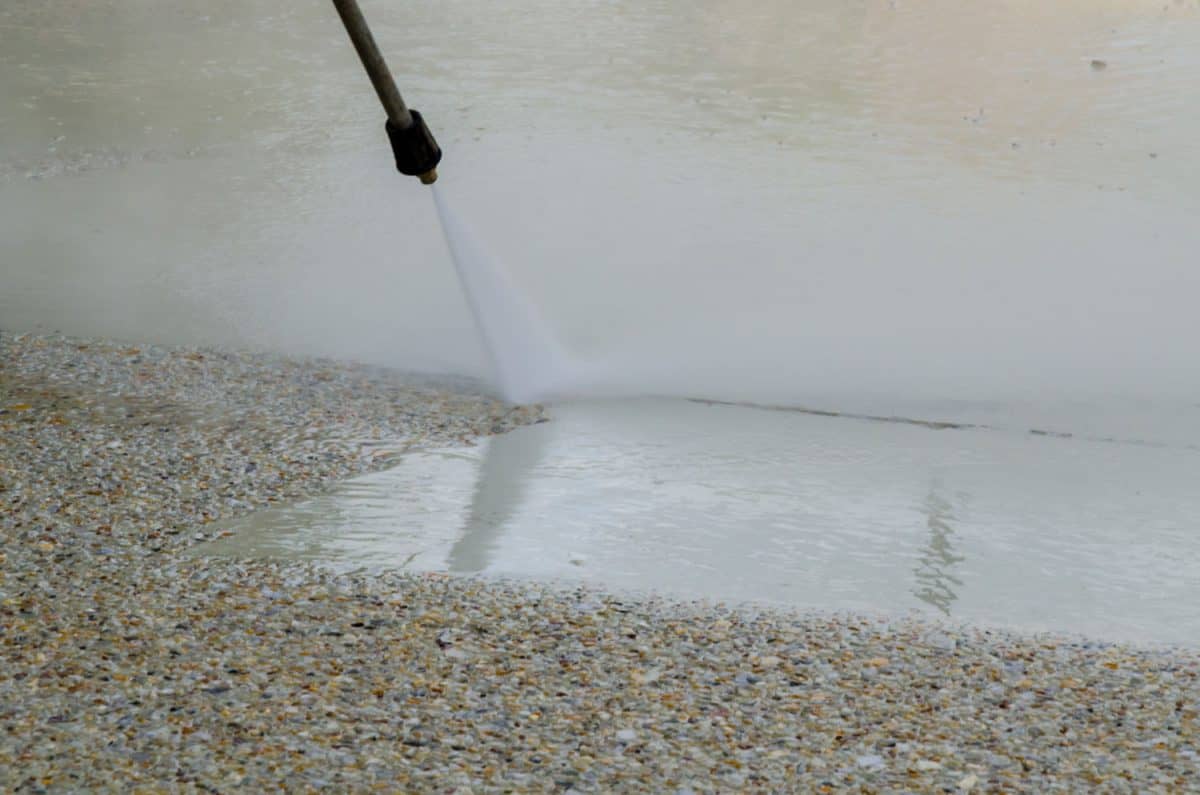
Do you have to seal concrete after pressure washing?
You don't have to reseal your exposed aggregate after every pressure washing session, but it is extremely important to do so at least once a year or every few years. Resealing the surface will protect it from stains, moisture, weather exposure, and several types of damage.
Not only will this preserve the elegant appearance of exposed aggregate, but it will also lessen the frequency of cleaning.
Sealing exposed aggregate is a job best left to professionals to ensure that the sealant is applied evenly and properly, avoiding mistakes that can affect the appearance of the surface. However, it's possible to do this on your own! Here are the steps to reseal exposed aggregate:
1. Choose the right sealant
The two most common types of exposed aggregate sealants are penetrating and topical. Penetrating sealers protect the concrete without changing its appearance, and only need changing every seven or so years. The downside is that they can't protect the gravel stones from loosening.
Click here to see this penetrating concrete sealant on Amazon.
Topical sealants, on the other hand, provide a glossy finish to the surface and possess the ability to keep gravel stones firmly intact. However, they will need a refresh every one to three years. Most experts and homeowners recommend high-gloss acrylic topical sealers since they enhance the natural look of the concrete and extend its life as well.
Click here to see this acrylic topical sealer on Amazon.
Whatever your choice of sealant, make sure to get one that's UV-resistant to prevent yellowing. A good sealant also needs to be moisture- and stain-resistant.
2. Clean the surface
To perform this task successfully, simply follow the steps we've discussed above. After cleaning, allow the concrete to dry for 24 hours before moving on to the next step.
3. Apply sealant
After drying, you can now apply the sealant using a short nap or 1/2 inch-roller. You can also use an airless sprayer. Take note that this is a tricky step: you need to apply it quickly and evenly because the surface will show mistakes like puddles, roll marks, and blotches.
It's best to work in small sections and be thorough in assessing for even application. Remember to check the label for the proper spread rate according to the manufacturer.
4. Leave to dry
Allow the sealant to dry for a day or two before using. You can reapply it in areas where the application is uneven.
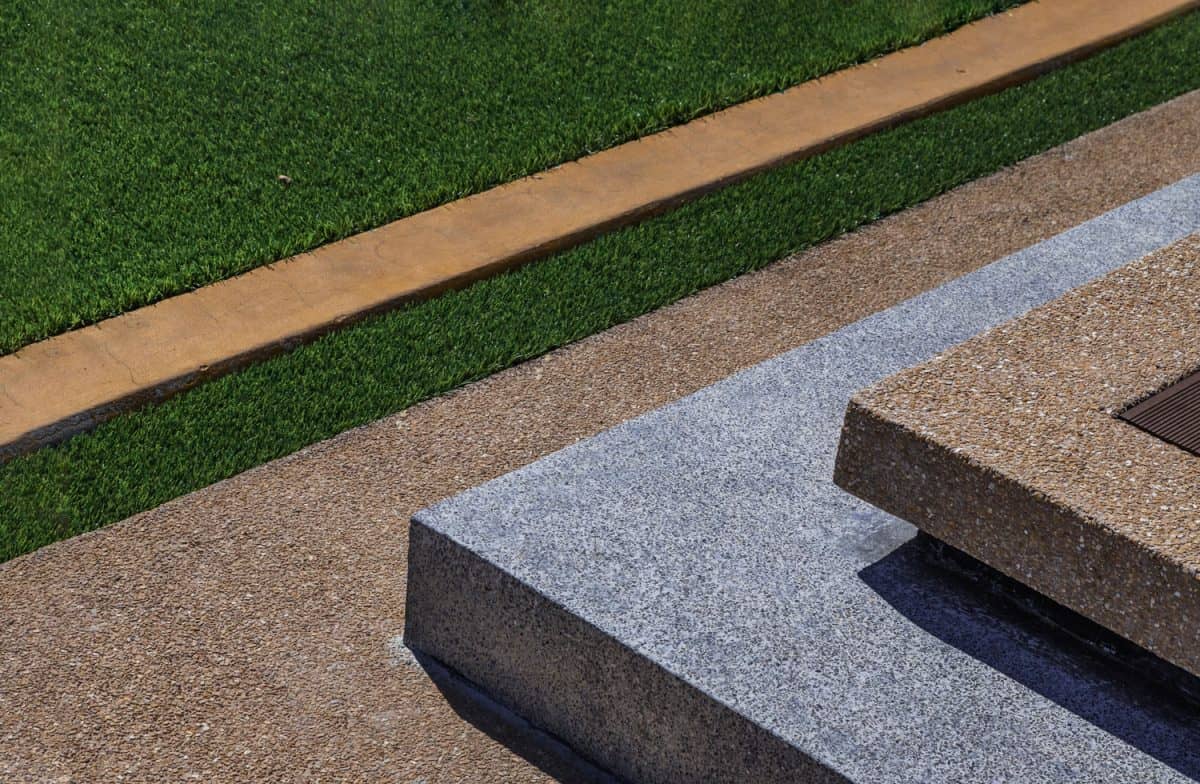
What is the best cleaner for exposed aggregate?
Most concrete cleaners or water-based cleaners on the market are suitable for exposed aggregate. Make sure to choose one strong enough to fight oil or petroleum stains as well as tire marks.
Click here to see this concrete-safe cleaner on Amazon.
However, if you want to save a few bucks, you can make a DIY cleaner! Dishwashing liquid and baking soda make great cleaners that can remove oil stains.
How many PSI Do I need to pressure wash concrete?
You need 3,000 PSI to pressure wash exposed aggregate. A lower PSI between 1,000 to 2,000 will do the job but it will take much longer. Any setting higher than 3,000 PSI and the pressure will dislodge the aggregate.
How do you clean concrete without a pressure washer?
If you don't have a pressure washer, no worries! You can still clean your concrete or exposed aggregate driveway successfully using a sprayer:
- Mix your choice of cleaner with water in a sprayer pump.
- Apply the cleaner all throughout the surface.
- Let sit for 15 minutes.
- Brush the surface with a stiff broom.
- Rinse with your hose.
Want to see this process in action? Watch this short yet informative video from 30 SECONDS Cleaners:
How do you remove moss from exposed aggregate?
Unfortunately, moss can grow everywhere and your exposed aggregate driveway certainly won't be spared. This can be quite unsightly and even result in fungus growth. So it's vital to remove moss as soon as it appears on the surface.
Here are the steps to remove moss from exposed aggregate:
- Use a broom to remove moss.
- Wet the surface using a water hose.
- Fill a bucket with 2 gallons of water.
- Pour 2 cups of oxygen bleach into the water and mix well. You can also use dishwasher detergent or vinegar for this step.
- Get a scrub brush and soak its bristles with the cleaning solution.
- Sweep and scrub off moss.
- Allow the solution to sit for 10-15 minutes.
- Rinse off the surface.
In Closing
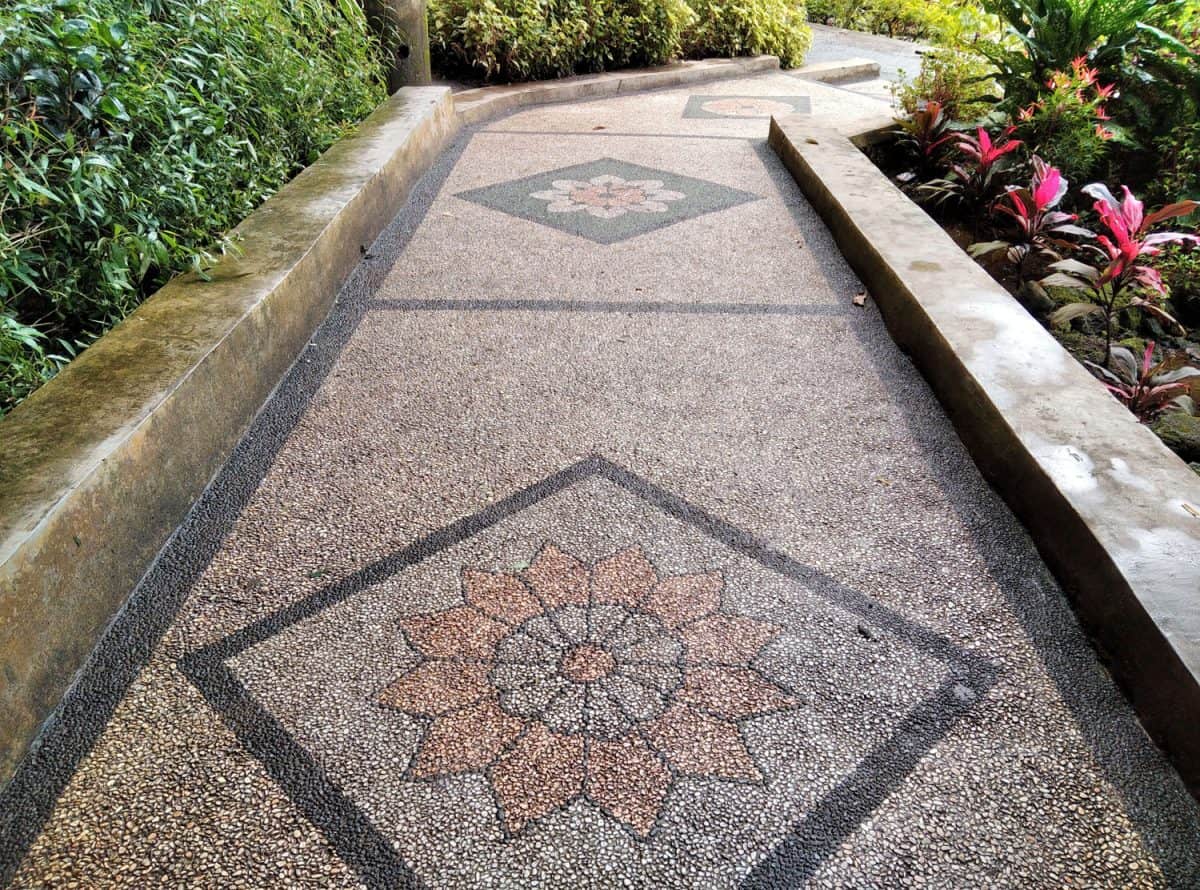
Cleaning exposed aggregate with a pressure washer is an effective way to get rid of oil stains and dirt, allowing you to restore the appeal of your driveway. This is a fairly straightforward task that won't take a day to complete, so it's best to do this on a regular basis or as soon as stains appear.
It's also important to reseal exposed aggregate regularly to protect it against damage and preserve its stunning surface.
We've just discussed cleaning your concrete aggregate of moss -but what if you'd like to add moss to enhance your hardscape? Check out: "Can You Grow Moss On Rocks?"





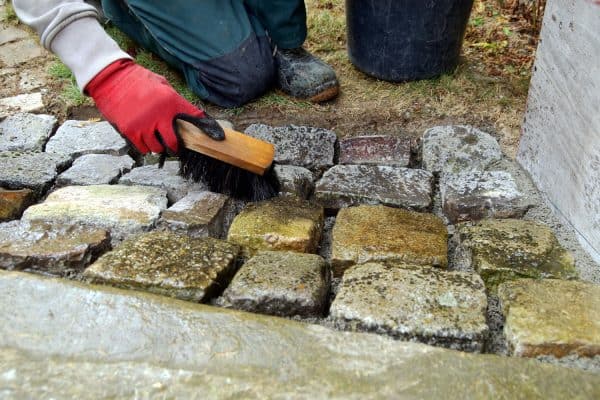
![Blue stone pavers on the garden patio, How To Clean Bluestone Pavers [Care & Maintenance Tips]](https://pavingplatform.com/wp-content/uploads/2022/03/Blue-stone-pavers-on-the-garden-patio-600x400.jpg)
![washing services - block paving cleaning with high pressure washer - Can You Pressure Wash Travertine Pavers? [Best Cleaning Methods]](https://pavingplatform.com/wp-content/uploads/2022/03/washing-services-block-paving-cleaning-with-high-pressure-washer-600x400.jpg)